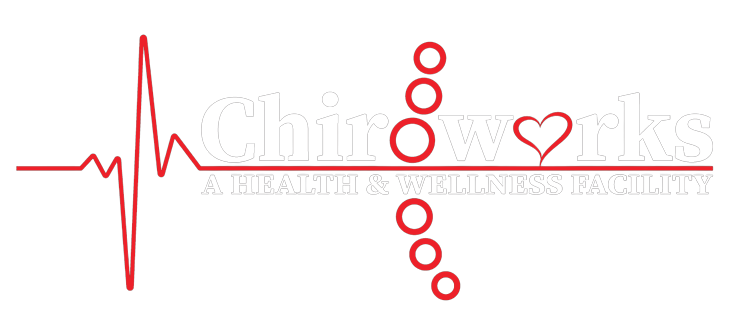Common Chiropractic Issues

Chiropractic can help with allergies, carpal tunnel syndrome, and more.
Chiropractic adjustment, also known as chiropractic manipulation, manual manipulation, or spinal manipulation, is the primary chiropractic treatment method for back pain.
Neck/Back Pain
Subluxations, or misalignments of the vertebrae, are the most common cause of pain in the neck and back. By putting pressure on nerves, a little misalignment might produce discomfort. These subluxations can induce muscular spasms and discomfort if left untreated. Chiropractic adjustments straighten your spine appropriately, releasing strain on joints and nerves. It is a long-term solution to the problem, not a temporary fix like pain pills or massage. Visit us now if you are suffering from back or neck discomfort.
Pinched Nerve
A pinched nerve occurs when a nerve is crushed or compressed. Misalignments in the spine, bulging or herniated discs, and other reasons can all contribute to this. Inflammation, discomfort, and muscular spasms are all caused by the increased pressure on the nerve. To ease the pain, the pressure on the nerve must be removed. An examination can discover the source of discomfort, and an adjustment can alleviate it by straightening the spine and treating the source of pain.
Sciatica
Sciatica is a painful condition caused by irritation of the sciatic nerve. Increased pressure on the sciatic nerve can be caused by bulging discs, spinal subluxations, and muscular spasms. When this happens, the lower back and leg experience discomfort, numbness, and weakness. To effectively treat sciatica, the underlying cause must be identified and addressed and can be done so by your chiropractor.
Headaches
Many individuals assume that loud noise, exhaustion, or stress are the causes of headaches. While all of these causes might contribute to headaches, stiffness in the neck and shoulders is the direct cause. In fact, the neck is the source of 80% of all headaches. The tension might cause misalignments in your neck's vertebrae causing pain. Pain generally starts at the base of the skull and extends into the temples, eyes, and forehead with a classic cervicogenic (neck origin) headache. A chiropractic adjustment can straighten the vertebrae in your neck, and massage can relieve stress in the neck and shoulder muscles. Rather than providing temporary relief from the symptoms, chiropractic can help eradicate the root of your headaches.
Carpal Tunnel Syndrome
People who spend a lot of time in front of a computer are more likely to develop this condition. Typing is a motion that, when performed repetitively and with poor posture, can cause carpal tunnel syndrome. Pain, numbness, weakness, or a burning feeling are some of the symptoms. The nerves in the fingers run up the arm and into the neck, passing via the wrist. The spine is the nerve system's nerve center, and your chiropractor can ease discomfort in your hands and wrists by making targeted spinal and joint adjustments.
Osteoarthritis
Arthritis is a condition that results from the breakdown of cartilage between joints. Knees, hips, back, neck, and hands/wrist are some of the key joints that are impacted. Arthritis can be unpleasant and impair the function of the afflicted parts. Arthritis in one joint might lead to arthritis or other issues in another. If you have arthritis in your left knee, for example, you may compensate by placing extra strain on your right side, which can lead to right hip difficulties.

Vertebral Subluxation Complex
When a vertebrae becomes misaligned or moves out of its normal position, this is referred to in the chiropractic profession as a subluxation, or more precisely, the Vertebral Subluxation Complex (VSC). VSC can be caused by a wide range of issues ranging from a minor slip or bump to a car accident or any sudden trauma. When a vertebrae is subluxated, it begins to put pressure on nerves, blood vessels and other surrounding structures.
The subluxation interrupts the natural nerve pathways that carry messages to and from the brain. In addition, as time goes by and the subluxation remains untreated, the spine and surrounding features such as discs can begin to degenerate.
This degeneration becomes more difficult to reverse as time goes by and the surrounding muscles, nerves and bones begin to adjust to the new shape. Because the body is a remarkable machine, it will start to accommodate these changes by compensating in other areas. The longer the subluxation is untreated, the longer it will take for treatment to return the vertebrae to its normal position.
A vertebral subluxation can be identified by its five components:
- Spinal Kinesiopathology (movement of the bones)
- Neuropathophysiology (nerve dysfunction)
- Myopathology (muscle changes)
- Histopathology (tissue damage)
- Pathophysiology (abnormal growth)
Chiropractors are experts in the manipulation of soft and hard tissue. Small, quick movements to the spine can reposition the vertebrae into its natural position. Through treatment, a vertebral subluxation can be corrected back to healthy functionality.
Degenerative Disc Disease
Degenerative disc disease is not as much a disease as it is a name for the changes that can happen to the spine as we age. Our discs are made of a tough, rubbery exterior and a soft interior. They sit between the vertebrae to act as shock absorbers. As we age, the spinal discs begin to degenerate. This can cause herniated discs, bulging discs, spinal stenosis, and osteoarthritis.
Degeneration of spinal discs can create no symptoms at all, and symptoms vary depending on the severity of the disease and the patient. Pain may occur at the site of the affected disc in the back or neck. Because compressed nerves are a common source of pain, it can spread to other parts of the body, including the buttocks, arms, and legs. There may also be numbness and tingling in the arms and legs. Pain can be slight or severe, and it can be debilitating.
Degeneration of the discs is a natural component of aging. As we become older, tears in the disc's harder outer layer become more likely. When the discs start to lose fluid, they shrink and become less flexible. Other variables that may come into play, in addition to age, are obesity, smoking, repetitive physical work, and injury.
Hot or cold packs, as well as anti-inflammatory medications, are frequently used to relieve pain produced by degeneration. Other types of therapy may be effective when disc degeneration produces issues such ruptured or bulging discs, spinal stenosis, or osteoarthritis. Physical therapy, stretching, and, in certain situations, surgery may be used. While degenerative disc disease is an inevitable aspect of growing older, there are steps you can do to avoid discomfort and maintain your health. If you have persistent back or neck discomfort, please come in for an evaluation so that we can devise a treatment plan for you.

Disc Bulge / Disc Herniation
The intervertebral discs of the spine are located between the vertebrae. A disc has cartilage on the exterior and a jelly-like substance in the middle. These discs provide a variety of functions, including permitting spine movement, generating space between vertebrae, and functioning as shock absorbers. The fluid center of the disc allows it to compress and expand in response to impact and movement. Discs can herniate, swell, become dislocated (slipped disc), or even rupture as a result of spinal trauma. However, trauma or direct harm to the region is not the main reason. The discs might weaken and dry as we grow older. These diseases can cause discomfort by putting pressure on the nerves that run around the spine.
Surgery can be risky, expensive, and requires recovery time. In many cases, you can experience relief from these conditions through chiropractic. By properly aligning the spine, pressure can be relieved on nerves and on the discs themselves. This will reduce and hopefully eliminate your pain and discomfort and allow you to live a normal lifestyle.
Joint Dysfunction
When joints become stiff and complete range of motion is reduced, this is known as joint dysfunction. An injury, bad posture, overuse/underuse of a joint, muscular imbalance, among other issues, can contribute to it. Like arthritis, joint dysfunction can cause pain in the joint and the surrounding muscles, and can also cause problems in other parts of the body due to overcompensation.
Sacroiliac joint dysfunction, which occurs where the base of the spine meets the pelvis, is a frequent kind of joint dysfunction. It causes lower back discomfort and makes it difficult to move. Because the symptoms are similar to sciatica or a herniated disc, this condition is frequently misdiagnosed.
Your chiropractor can correctly identify and treat this issue. Specific adjustments for the afflicted joint might help restore mobility and alleviate discomfort. If you're suffering from joint discomfort, come see us.
Whiplash
Whiplash is a common injury among those who have been in a vehicle accident. When an automobile is hit from behind or collides with another item, the neck snaps forcefully back and forth. Overextension of the muscles and ligaments results in strains and/or tears. This is known as soft tissue injury, and it can result in stiffness and pain. Due to the overextension caused by the sudden movement, whiplash can cause structural damage such as misaligned vertebrae, herniated, bulging, or ruptured discs, or nerve damage.
These types of injuries can benefit from chiropractic treatment. Those who have been in vehicle accidents and have suffered from whiplash might benefit from adjustments and alignments. When the spine is aligned correctly, the strain on the discs and nerves is relieved. Soft tissue injuries can be treated with chiropractic massage to help reduce pain and discomfort. If you've been in a vehicle accident, make an appointment with us before turning to painkillers or surgery.
Maintenance Care
We have discussed many conditions that can be relieved through chiropractic. The best way to treat these conditions is to prevent them before they even start. Regular chiropractic visits can help to prevent physical problems and injuries from occurring. Other potential benefits of regular chiropractic visits are increased flexibility and mobility, higher level of energy, improved posture, more effective immune system, better circulation, and an overall better feeling of well-being.
Allergies
Allergies can be reduced in severity and frequency with chiropractic treatment. As a direct, short-term relief from allergies, chiropractic does not react like an antihistamine. Chiropractic treatment improves your body's ability to combat allergens.
Sneezing, coughing, congestion, hives, rashes, and, in severe cases, seizure and anaphylactic shock are all symptoms of allergies, which are caused by your immune system reacting to an allergen (substances that ordinarily have no impact on individuals). The histamines produced by your immune system in an attempt to protect your body from the allergen cause these symptoms.
When your spine is misaligned, it can put a strain on your neurological system. The nervous system has been demonstrated to influence the immune system's functioning in studies. Your immune system cannot perform at its best when your neurological system is stressed and not working correctly. Chiropractors help the neurological system by realigning the spine and relieving nerve tension. This permits the immune system to function at a greater level, making it simpler to fight infections and detect allergies. Your immune system will not respond to allergens if it identifies them, or at least not as severely.

